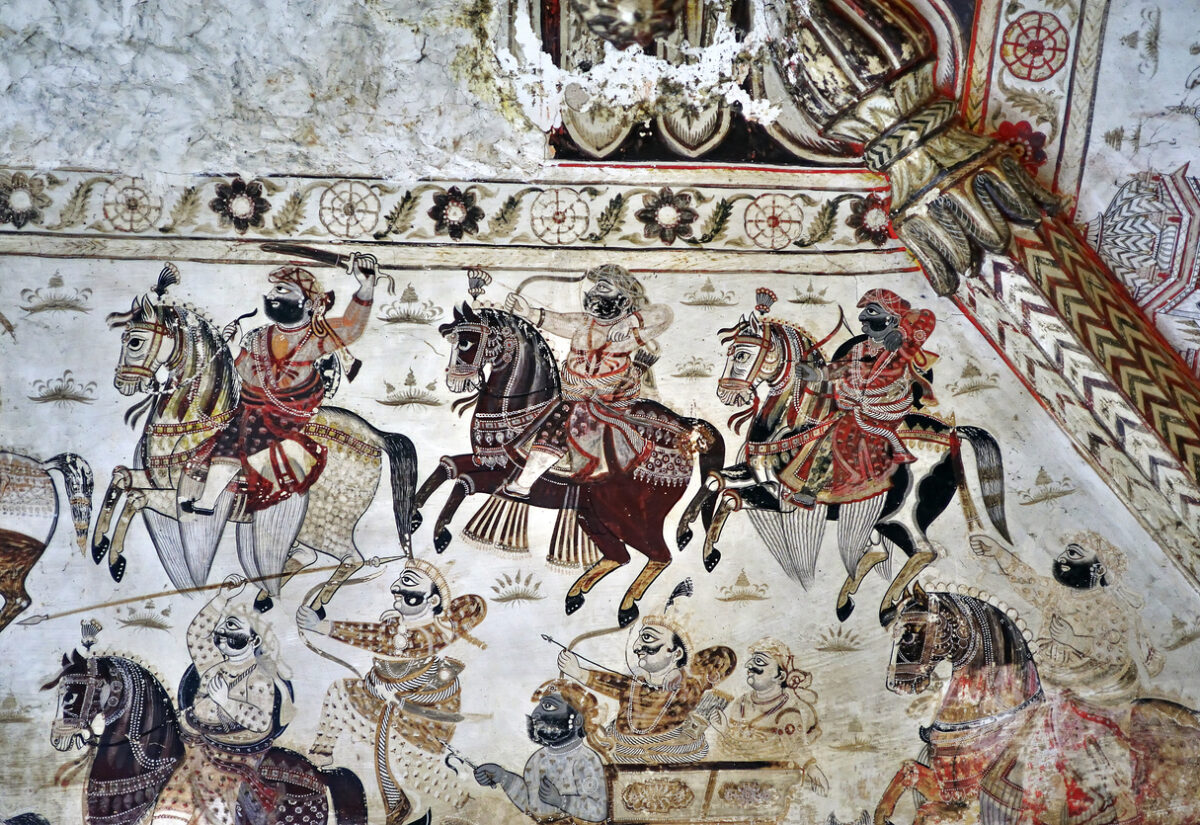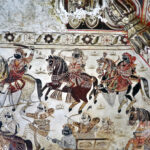 Getty Images
Getty ImagesAnimals have always been part of human civilisation, but their influence goes far beyond loyalty or labour. At certain pivotal moments, animals haven’t just participated in history—they’ve driven it. From sparking revolutions to influencing major scientific breakthroughs, some creatures have left a bigger legacy than many rulers or armies. Here are several compelling examples of times animals directly altered the course of history, with sourced details to back them up.
A cow sparked the Great Chicago Fire (allegedly).
It’s one of the most enduring legends in American history: in 1871, a cow belonging to Catherine O’Leary supposedly kicked over a lantern in her family’s barn, starting a fire that swept through Chicago. While the accuracy of this version is highly disputed, with many historians calling it scapegoating rooted in anti-Irish sentiment, the fire’s impact is undeniable. It burned for two days, levelled a large portion of the city, caused 300 deaths, and left more than 100,000 people homeless. The aftermath led to massive changes in building regulations, fire safety systems, and city planning. Even today, debates continue about how it started, but the cow remains part of the lore.
Pigeons helped win two world wars.
Homing pigeons saved thousands of lives in both World War I and World War II. Able to fly long distances and return to their lofts with uncanny accuracy, these birds were used to carry messages when radio communications failed or were too risky. One of the most decorated pigeons in history, Cher Ami, delivered a critical message despite being shot through the chest and losing a leg. That message saved nearly 200 men from friendly fire. Pigeons were so valued that armies developed entire departments dedicated to training and caring for them. Their contribution was later recognised with medals and memorials. The RPRA goes into detail about their wartime role, if you’re curious!
A horse helped create an empire.
Bucephalus, the horse of Alexander the Great, is remembered not just for his strength, but for what he symbolised. When a young Alexander tamed him—something no one else could do—his father reportedly said, “My boy, you must find a kingdom big enough for your ambitions. Macedonia is too small for you.” Bucephalus carried Alexander through pivotal battles across Asia and India, serving as a constant presence through much of his conquest. Their bond helped build Alexander’s mythos and eventually the city of Bucephala was named in the horse’s honour.
Rats unleashed the Black Death.
In the mid-14th century, the bubonic plague, spread primarily through fleas carried by black rats, swept across Europe. It wiped out as much as 60% of the population, caused widespread panic, and left entire towns abandoned. While rats were not the sole vector, their role in carrying infected fleas made them central to one of the most devastating pandemics in history. The resulting labour shortages helped dismantle the feudal system, restructured the economy, and fuelled scientific inquiry into disease. Modern genetic studies have confirmed the link to the Yersinia pestis bacterium.
A dog helped ignite revolution in Russia.
In 1917, revolutionary tensions in Russia were already close to boiling over. According to contemporary accounts, one protest turned violent, and among the casualties was a stray dog caught in the crossfire. The image of the dog’s lifeless body was used in posters and pamphlets by anti-Tsarist groups to stir emotional outrage. Whether the story was strictly true or not, it reveals how animal symbolism can be weaponised in political movements. The dog became a martyr of sorts—proof, in the eyes of many, that the regime had lost all humanity.
A cat spoiled Napoleon’s secret attack.
During Napoleon’s 1798 campaign in Egypt, a planned nighttime ambush was reportedly compromised by a chorus of howling feral cats. The noise alerted local forces to the French soldiers’ approach, resulting in a botched mission. While the exact details vary depending on the account, the story illustrates how unpredictable elements, especially animals, can alter the course of military plans. Andrew Roberts’ biography of Napoleon notes several small moments like this where chance events, often involving animals or weather, disrupted grand strategies.
A cow’s disease led to modern vaccines.
Before antibiotics and antiseptics, smallpox was one of the most feared diseases in the world. In 1796, Edward Jenner observed that milkmaids who contracted cowpox, a much milder disease, didn’t get smallpox. Using material from cowpox blisters, he created the first successful vaccine. Jenner’s experiment laid the groundwork for immunology and eventually led to the global eradication of smallpox. His work not only changed the medical field forever but arguably saved millions of lives. History of Vaccines outlines Jenner’s process and impact.
A pig nearly caused a war.
On 15 June 1859, an American farmer living on San Juan Island, a territory disputed between Britain and the US, shot a pig that belonged to a British settler. The pig had wandered onto his land and eaten some of his potatoes. This led to a diplomatic crisis known as the Pig War. Troops from both sides were sent to the island, and for several tense months, war seemed imminent. Fortunately, no human was harmed, and the issue was eventually resolved through negotiation. The incident shows just how quickly minor events involving animals can escalate into international standoffs.
Elephants transformed ancient warfare.
When Hannibal Barca led his army across the Alps to attack Rome during the Second Punic War, he brought with him several dozen war elephants. Their sheer size and novelty terrified Roman soldiers. Although many elephants didn’t survive the journey, those that did caused chaos on the battlefield. Hannibal’s use of elephants gave him a psychological advantage and played a key role in early victories like the Battle of Trebia. It was one of the earliest and most famous uses of animals as battlefield tools. The logistics and impact of the crossing were impressive, to say the least.
A dog exposed an assassination plot in Rome.
According to Roman legend, a loyal watchdog uncovered a plot to assassinate a high-ranking official by barking relentlessly at the would-be killers. The commotion gave guards enough time to intervene. Dogs were revered in Roman society for their loyalty and protective instincts, often appearing in art and grave inscriptions. Whether the exact story is apocryphal or not, it reflects the cultural value placed on animals for their emotional and practical roles.
Dolphins and whales have aided navies.
In modern times, marine mammals like dolphins and whales have played surprising roles in naval operations. The US and Russian navies have trained dolphins for underwater mine detection and surveillance. Dolphins’ natural sonar abilities allow them to identify objects on the sea floor more accurately than many machines. There are even reports of whales interfering with submarine tracking or surfacing in ways that revealed stealth vessels. While these cases don’t always make front-page news, their cumulative impact on cold war tactics and underwater warfare is real.
Animals have been by our side for a very long time.
From cows and cats to horses, pigs, and pigeons, animals have popped up at the strangest and most crucial moments in human history. Sometimes they were symbols. Sometimes they were accident-prone. Sometimes they were heroes. These stories remind us that history isn’t just written by people in power or soldiers on the battlefield—it’s also nudged along by the creatures around us. In some cases, a meow or a misplaced hoofprint changed everything. Their presence has been overlooked for too long, but make no mistake, they were there, and they made a difference.



